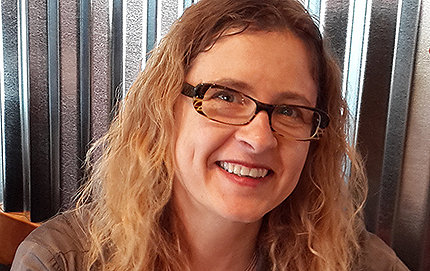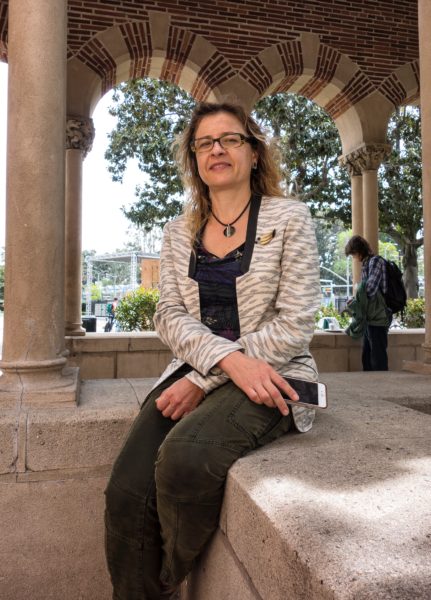
27 Jul TSRC Town Talk: Light & Life, Power For Our Planet
Professor Anna Krylov speaks at the Telluride Conference Center, Tuesday,August 1,, 6 p.m., part of Telluride Science Research Center’s (TSRC) Town Talks in Mountain Village. The subject: Molecules and Light: The Story of Life, Death, and Our Quest for Knowledge. Admission is free; a cash bar opens at 5:30 p.m.

Photons, tiny parcels of light, shoot off the surface of the sun, rocket for millions of miles through space, bounce off a tree in front of you, pass through the pupil of your eye, and finally hit the molecules in your retina. The result: the image of the tree in your mind.
Some of those solar photons are absorbed by the leaves of the tree, giving the plant the energy it needs to build itself up from carbon dioxide and water. That’s photosynthesis. It fuels all life forms on Earth.
Inspired by nature, man-made solar panels harvest the solar photons converting them into electricity and fuels.
The relationship of humans with light is not simple. We need light to see the world around us. Light provides us with food and energy – but it can also as a destructive force, damaging our genetic material, our DNA, causing deaths and accelerating aging. How do our bodies repair the damage? Ironically, using light to power photolyases, molecular repair machines.
What do these phenomena have in common? How do they work? How can we control them? The answer lies in understanding the interaction between molecules and light. Eyesight, photosynthesis, solar energy harvesting—all are products of the interaction between light and molecules. Photochemistry – chemical processes involving light and molecules – is the focus of Professor Anna Krylov’s research.
Krylov, the Gabilan Distinguished Professor in Science and Engineering at the University of Southern California, works with her team to better understand the interactions of light and molecules using quantum mechanics and computers.
“We are developing theoretical approaches describing how molecules interact with light and what processes can result from these interactions,” explained Professor Krylov. “By converting the theories into equations and the equations into computer codes, we can use the power of computers to simulate various photoinduced processes.”
Again, life as we know it would not exist without light. Photosynthesis provides plants with energy—energy that makes its way all the way up the food chain to us. Technology based on solar energy harvesting could well be the ultimate answer to our energy needs.
“Light is an essential ingredient for life — without it, the Earth would be cold and lifeless. And if someone were to come to this dark, miserable place, they would not be able to see how dark, empty, and miserable it is, because we need light to see things,” says Professor Krylov.
In the laboratories, Krylov and other scientists manipulate photons to learn about what molecules do inside plants, animals, or materials. Some of our most powerful research tools are based on the interactions of molecules and light.
In this week’s TSRC Town Talk, “Molecules and Light: The Story of Life, Death, and Our Quest for Knowledge,” Professor Krylov explains how light plays its important roles and how scientists find new ways to use light to learn more about the world around us and in doing so, solve important challenges facing humanity today.
To learn more about one of the most important processes on Earth, come to TSRC’s Town Talk on Tuesday, August 1, 6 p.m. at the Telluride Conference Center in Mountain Village.
The cash bar opens at 5:30 p.m.
Admission is free.
TSRC Town Talks are a series of weekly talks for the public in Telluride, sponsored by the nonprofit Telluride Science Research Center. Over 1,400 scientists from all over the world come to Telluride each year to discuss new ideas and build research partnerships. To learn more about TSRC and its current work go to www.telluridescience.org.


Sorry, the comment form is closed at this time.